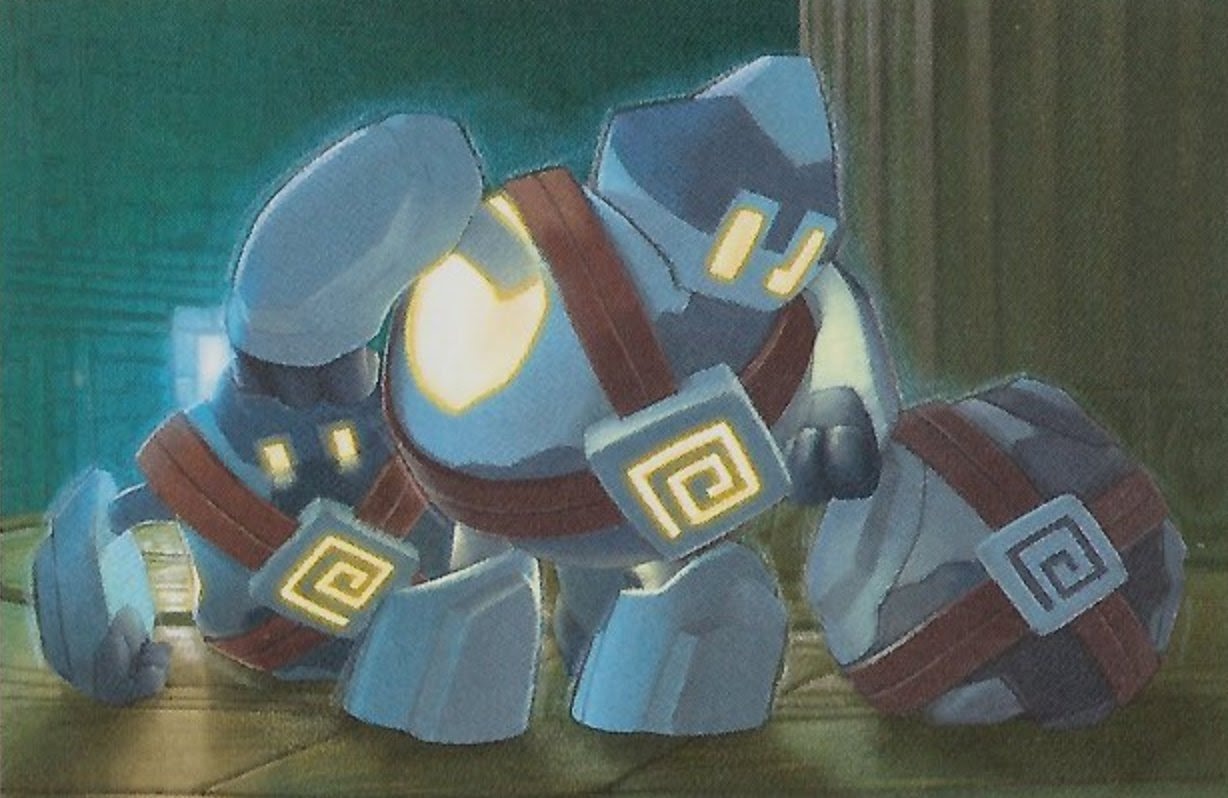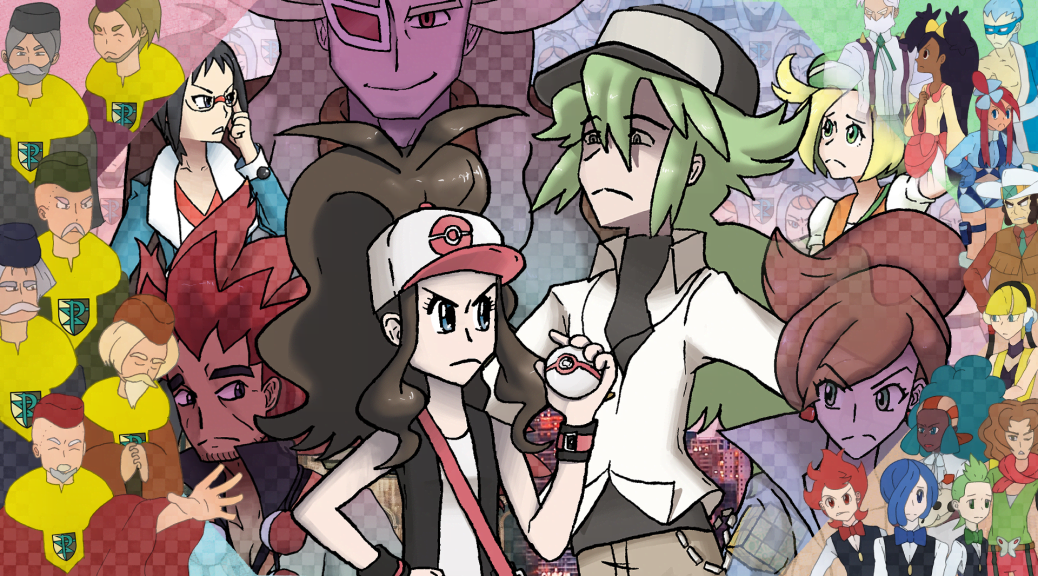Part II: The Chapters of Unova
For the anniversary of the release of Pokémon Black and White, we continue our tribute to the games. Part II focuses on the main storyline and its synthesis of narrative and gameplay.

Part II: The Chapters of Unova
Beginnings | Foundations | Castelia | Nimbasa | Driftveil | Chargestone | Icirrus
Dragonspiral | Reshiram & Zekrom | Relic Castle | The Stone | Opelucid | The League | N’s Bridge | The Sages
N’s Room | The End | Beginnings (Redux) | Kyurem | The Ruins | The End (Redux) | Champions
Spiraling Out of Control
Many Team Plasma members broke straight through the wall of Dragonspiral Tower; now there’s a bridge leading into the once-inaccessible spire, more intentional references to Unova’s underlying themes. The tower rumbles and roars as you climb, almost as if something is raging at its peak. On the first floor are wild Mienfoo and Druddigon, which can also be encountered outside. But there’s one more Pokémon that dwells here, and past the first floor, it’s the only Pokémon you’ll find—Golett.
 Golett can be seen as the opposite of Klink. Klink is a recently appearing Pokémon, dating back no further than a hundred years. It can only be found in Chargestone Cave, where it was naturally discovered, and the P2 Laboratory, implying it may have been brought there by scientists who used the facility for research and experiments. By comparison, Golett is super-ancient—a clear reference to the thematic use of “old versus new.” Golett can only be found within the walls of the Dragonspiral Tower, that no one has supposedly breached before now. This lack of exploration has limited peoples’ understanding of the tower, but this only increases its worldbuilding value. A tower that’s thought to have stood since before the founding of Unova is now open to you, and the Pokémon that can only be found here—and is its exclusive resident on the upper floors—is a golem-like being. Its Pokédex entries mention it being created by “an ancient and mysterious civilization,” and the energy it uses to move is just as ancient and incomprehensible.
Golett can be seen as the opposite of Klink. Klink is a recently appearing Pokémon, dating back no further than a hundred years. It can only be found in Chargestone Cave, where it was naturally discovered, and the P2 Laboratory, implying it may have been brought there by scientists who used the facility for research and experiments. By comparison, Golett is super-ancient—a clear reference to the thematic use of “old versus new.” Golett can only be found within the walls of the Dragonspiral Tower, that no one has supposedly breached before now. This lack of exploration has limited peoples’ understanding of the tower, but this only increases its worldbuilding value. A tower that’s thought to have stood since before the founding of Unova is now open to you, and the Pokémon that can only be found here—and is its exclusive resident on the upper floors—is a golem-like being. Its Pokédex entries mention it being created by “an ancient and mysterious civilization,” and the energy it uses to move is just as ancient and incomprehensible.
Black and White‘s decision to include only new Pokémon in its main story campaign brings a lot of positive value to the game overall. Each encounter is all-new, meaning the sense of discovery and wonder can be shared by all players, even those who are series veterans. Players who are new to the series, or only played a few games but missed out on many, also don’t feel overwhelmed—everyone starts off on the “same page.” And, perhaps most brilliantly, each Pokémon has an opportunity to enhance the narrative, even if they’re not an almighty legendary. Golett is the first of such Pokémon tied to the history of ancient Unova, and players can’t help but wonder, just who were these ancient people creating Pokémon from clay?
Although Dragonspiral Tower has been uninhabited by humans since ancient times, towers themselves are man-made structures. Another connection can be drawn to Chargestone Cave: the cave is an entirely natural structure that humans have encroached upon and disturbed, but the man-made tower has been taken over, at least on the bottom floor, by some wild Pokémon from the outside. They may not have made it to the upper floors yet, but the Druddigon and Mienfoo seem to be content in the tower all the same. Perhaps humans and Pokémon can indeed live together symbiotically—especially if people can in fact create Pokémon such as Golett.
Another connection can be drawn to the other tower in Unova, the Celestial Tower. It’s already notable for games centered on duality to feature two prominent towers, but the symbolism runs even further than that. Both towers were created to reach the heavens,1 but in Dragonspiral’s case it’s not for the sake of resting souls to reach the other side, but for the living to be able to reach a deity-like figure. The dragon that supposedly rests—not in eternal but temporary slumber—atop this tower has the power to found new regions—essentially creating new worlds—and crown its new king. Kings are traditionally seen as an extension of a god-like figure, a hero possessing supernatural powers.2 The ancient king of Unova, having been able to bring together warring people based on Ghetsis’s accounts, is already described as a hero, reflecting the repeated use of the word when discussing N’s plans. And N, who can speak to Pokémon—and even see the future—certainly has his fair share of supernatural powers. The revered dragon that helped found the Unova region would certainly have been granted a tower spiraling to the heavens, an appropriate place where it could bestow its blessing upon a new hero just as a god would give their power to a new king.3
Spirals themselves are a very naturally-forming pattern—although not as common as the hexagon—including the likes of whirlpools, shells, fingerprints, and even galaxies. As a result, their symbolic meaning is usually tied to context, and most times are made unconsciously,4 further enhancing the feeling of ancientness and mystery coming from this place. Double spirals suggest duality, such as yin and yang,5 or opposites coming together to form a complete—or perfect—whole,6 although there’s only one spiraling staircase here, reflective of how only a single dragon rests at the tower’s peak. Indeed, at this moment, N doesn’t believe opposites can come together to create perfection. Rather, he thinks it’s only through their separation that perfection can come to be. Right now, the Dragonspiral Tower is in agreement with him, as is the dragon who shall side with him at the peak. There is only one hero who can save Unova right now, and that hero is N.
The momentum added to the camera while ascending the tower draws parallels to a whirling spiral, representative of the ever-moving time and cyclical pattern of seasons,7 both themes inherently tied to Unova. Towers are also considered “a symbol of inaccessibility and protection,”8 as the once-impenetrable tower safely housed the slumbering god-dragon away from the rest of the world. Just as spirals are among the most frequently utilized symbols in religious imagery,9 the Dragonspiral Tower exudes its ancientness and esoteric nature in its choice of symbolism.
A large group of Team Plasma Grunts block the way to the upper floors where their lord N is. Although Brycen and Cheren can hold off a good number of them, you still must make your way through some as you trek upward. One grunt confirms the meaningfulness behind this place as he admits after defeat, “Still, this is a great tower. I feel not only its history but also its awe-inspiring power.” And just as a coiled spiral “suggest[s] latent power,”10 a great power will soon be unleashed here.
A few more stories above, and the rumbling and rampaging grows ever stronger. Something is sparking—or perhaps burning—at the top of the tower. A new sage, Giallo, announces to four grunts, “It’s finally time. Our lord N will become the hero!” When he notices you, he sends the grunts to stop you. After defeating them, as per the rules of this world, they have no choice but to let you through.
But it’s too late.
